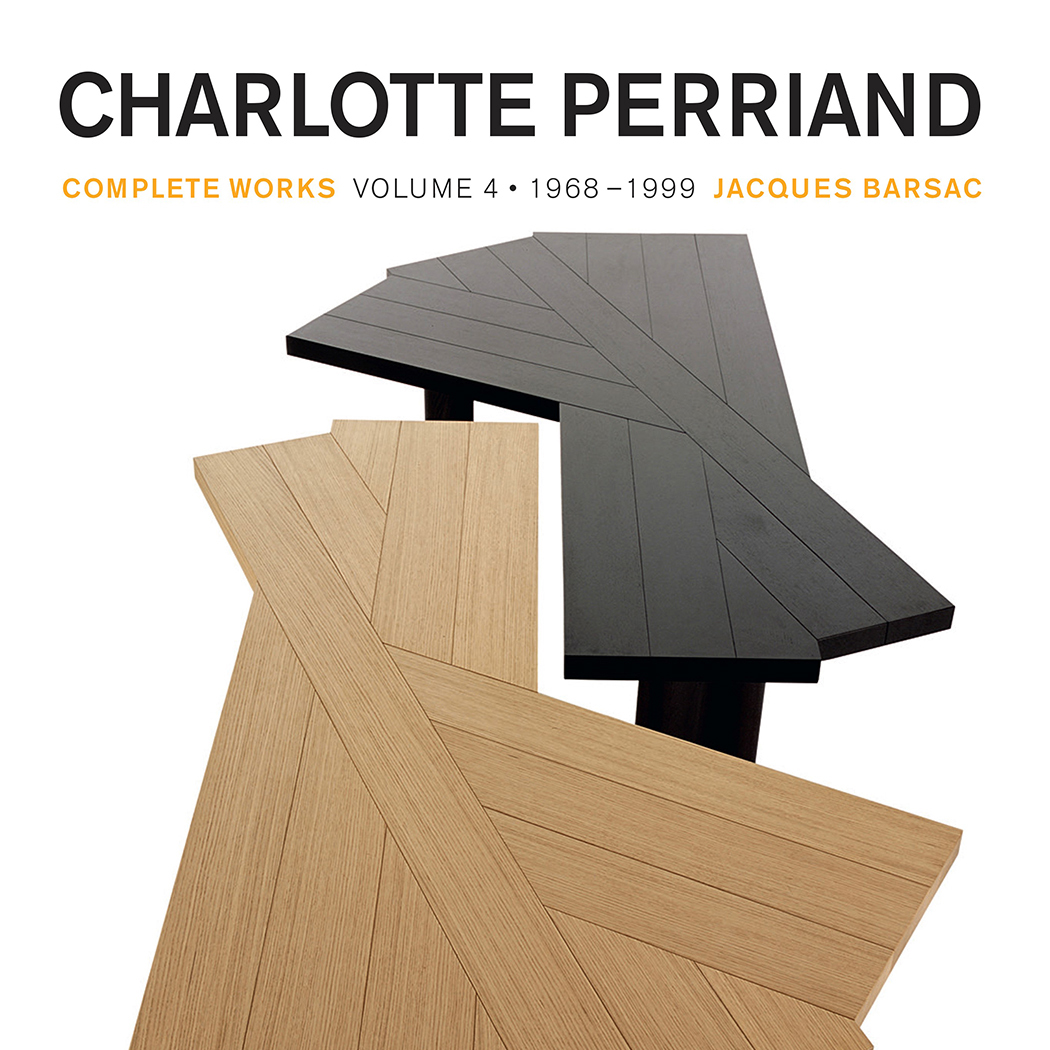***
Title: Charlotte Perriand. Complete Works Volume 4. 1968-1999
Authors: Jacques Barsac
Edited by: Scheidegger&Spiess, Archives Charlotte Perriand
2019. ISBN: 978-3-85881-778-5
Language: English
527 pages
***
“Creativity is spontaneous, but to preserve its freshness while perfecting its execution, it must be nourished, enriched by all the members of the studio. There is no competition, only sinergy. The problema remains the same. Our time has to be expressed. Changes are occurring that we cannot imagine. Walking is moving forward, that is my motto.”
“La creatividad es espontánea, pero para preservar su frescura mientras se perfecciona su ejecución, debe ser alimentada, enriquecida por todos los miembros del estudio. No hay competencia, sólo sinergia. El problema sigue siendo el mismo. Nuestro tiempo tiene que ser expresado. Se están produciendo cambios que no podemos imaginar. Caminar es avanzar, ese es mi lema.”
Charlotte Perriand
“What she wanted was an open and convivial city, a home for everyone, a room of one’s own, but also comunal spaces for shared leisure activities, fresh air, the mountains, beauty for everyone. “The problems of the greatest number of people are the ones that she always wanted to solve” her friend Sert said of her. This ideal is the common thread running through her entire body of work. It informed how she arranged a room, how she modeled her ítems of furniture, and the materials out of which her objects were made”.
“Lo que ella quería era una ciudad abierta y acogedora, un hogar para todos, una habitación propia, pero también espacios comunes para actividades de ocio compartidas, aire fresco, las montañas, belleza para todos. “Los problemas del mayor número de personas son los que ella siempre quiso resolver” dijo de ella su amigo Sert. Este ideal es el hilo conductor de todo su trabajo. Informaba de cómo organizaba una habitación, cómo modelaba sus muebles y los materiales con los que se fabricaban sus objetos”.
Jacques Barsac
Since our beginnings as editors of Hidden Architecture we have taken a special attention to Charlotte Perriand. Architect, designer, photographer, complete artist, teacher, lover of life and a woman strongly committed to society throughout her life, she would represent like few people the ideal that, often naively, is attributed to the profession of architect. Born in 1903, she lived through the entire 20th century until the year of her death, 1999. The profound social and technological changes, as well as the traumas caused by wars, especially World War II, will be crystallized in her person and her work, as well as even current social demands such as the emancipation and empowerment of women or ecology. Throughout her life she maintained close and lasting personal relationships with other famous architects such as Le Corbusier, Jean Prouvé or Josep Lluis Sert, but on this occasion the story should not revolve around the relationships that a particular woman has with a man. Charlotte Perriand should not be explained herself from her collaboration with Le Corbusier or her complicity with Prouvé, even though these relationships were highly influential for the evolution of her career. Just as it was for theirs.
Desde nuestros inicios como editores de Hidden Architecture hemos prestado un especial interés por la figura de Charlotte Perriand. Arquitecta, diseñadora, fotógrafa, artista en general, docente, amante de la vida y mujer fuertemente comprometida socialmente a lo largo de su trayectoria vital, representaría como pocas personas el ideal que, muchas veces de manera ingenua, se atribuye a la profesión de arquitecto. Nacida en el año 1903, recorrerá el siglo XX por completo hasta el año de su fallecimiento, 1999. Los profundos cambios sociales y tecnológicos, así como los traumas que las guerras ocasionaron, en especial la Segunda Guerra Mundial, quedarán cristalizados en su persona y en su obra, así como reivindicaciones sociales tan actuales hoy en día como la emancipación y empoderamiento de la mujer o la ecología. A lo largo de su vida mantendrá estrechas y duraderas relaciones personales con otros arquitectos tan célebres como Le Corbusier, Jean Prouvé o Josep Lluis Sert, pero en esta ocasión el relato no debe girar en torno a las relaciones que una mujer determinada mantiene con un hombre. Charlotte Perriand no debe explicarse desde su colaboración con Le Corbusier o su complicidad con Prouvé, por mucho que estas relaciones fueran altamente influyentes para la evolución de su carrera. De la misma manera que lo fue para la de ellos.
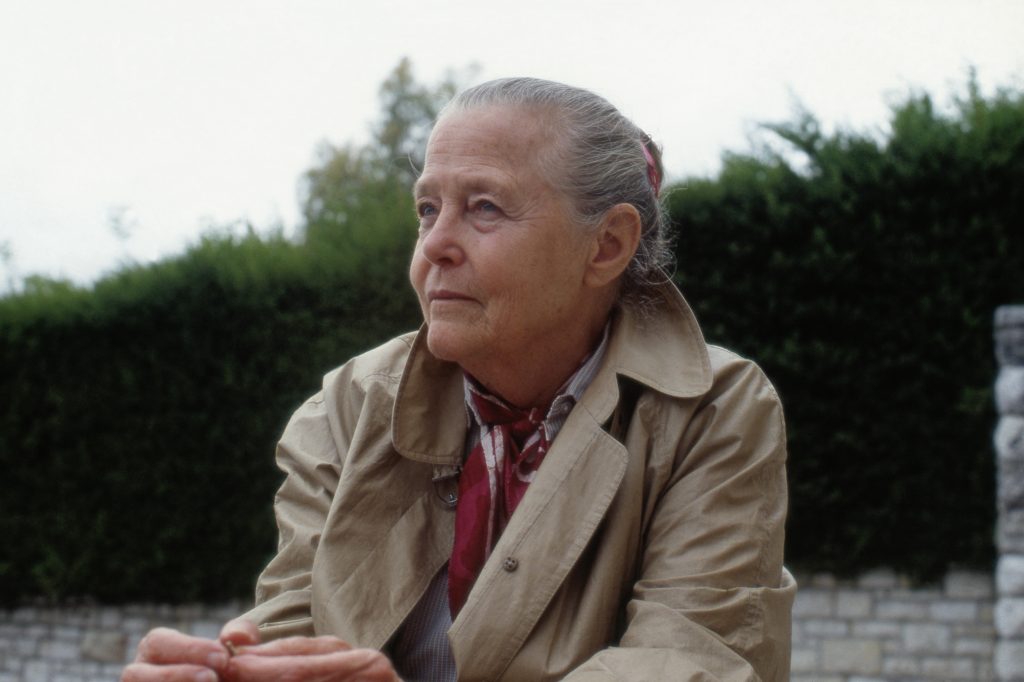
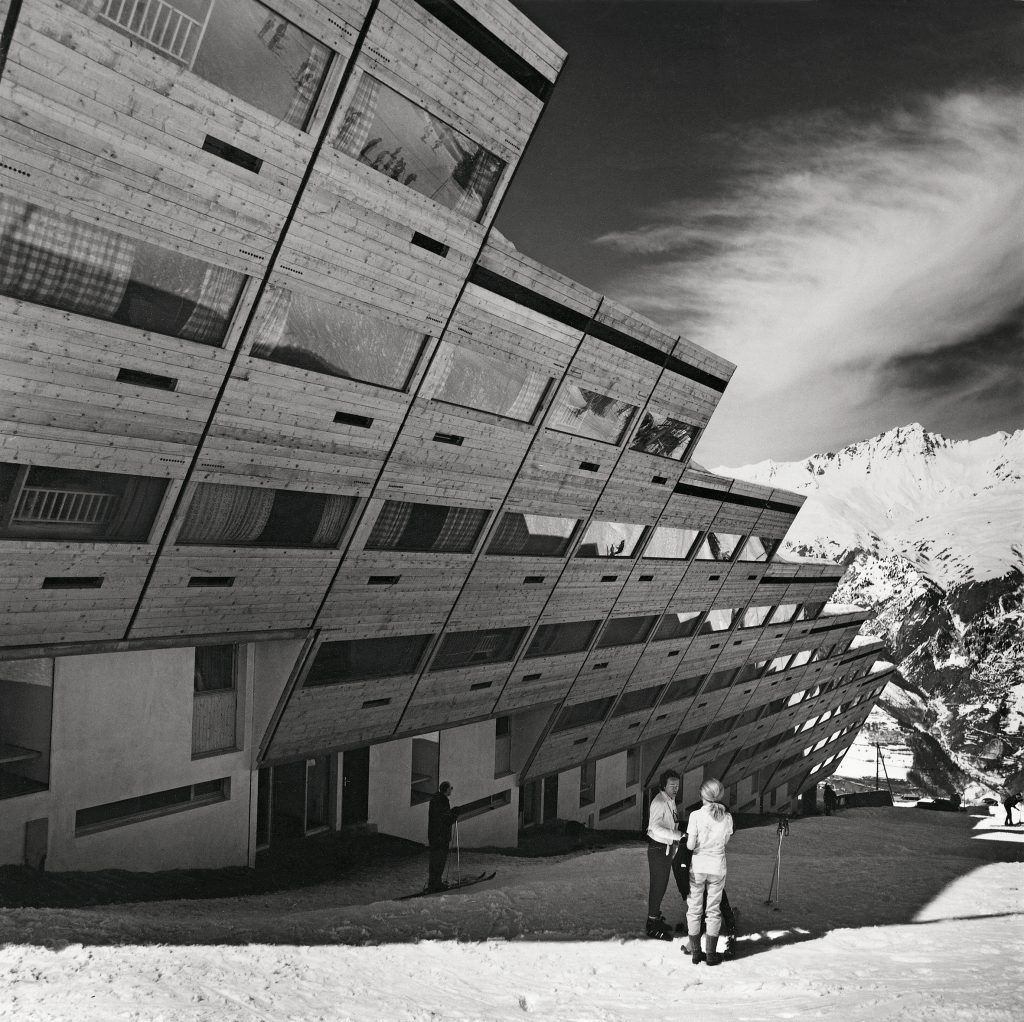
From a young age she kept a close relationship with the French Communist Party, breaking her affiliation after the non-aggression pact signed between the Soviets and the Germans at the dawn of Nazism. From this period she always retained a strong concern for achieving a society where justice and equal opportunities are a reality for all individuals. Her concern for affordable, quality housing for all, as well as universal and industrialized design within the reach of the most disadvantaged social classes, were constant in her production. As a woman who develops her life and career with a constant attitude of rebellion in the bourgeois society of the 20th century, with an absolutely patriarchal structure, her resistance can be considered as a pioneer of feminism within the world of architecture.
Desde joven mantuvo una estrecha relación con el Partido Comunista Francés, rompiendo su afiliación tras el pacto de no agresión firmado entre soviéticos y alemanes en los albores del nazismo. De esta época conservará siempre una fuerte preocupación por alcanzar una sociedad donde la justicia y la igualdad de oportunidades sean una realidad para todos los individuos. Su preocupación por la vivienda asequible y de calidad para todos, así como por un diseño universal e industrializado al alcance de las clases sociales más desfavorecidas serán una constante en su producción. Como mujer que desarrolla su vida y su carrera con una constante actitud de rebeldía en la sociedad aburguesada del siglo XX, con una estructura absolutamente patriarcal, su resistencia se puede considerar como pionera del feminismo dentro del mundo de la arquitectura.
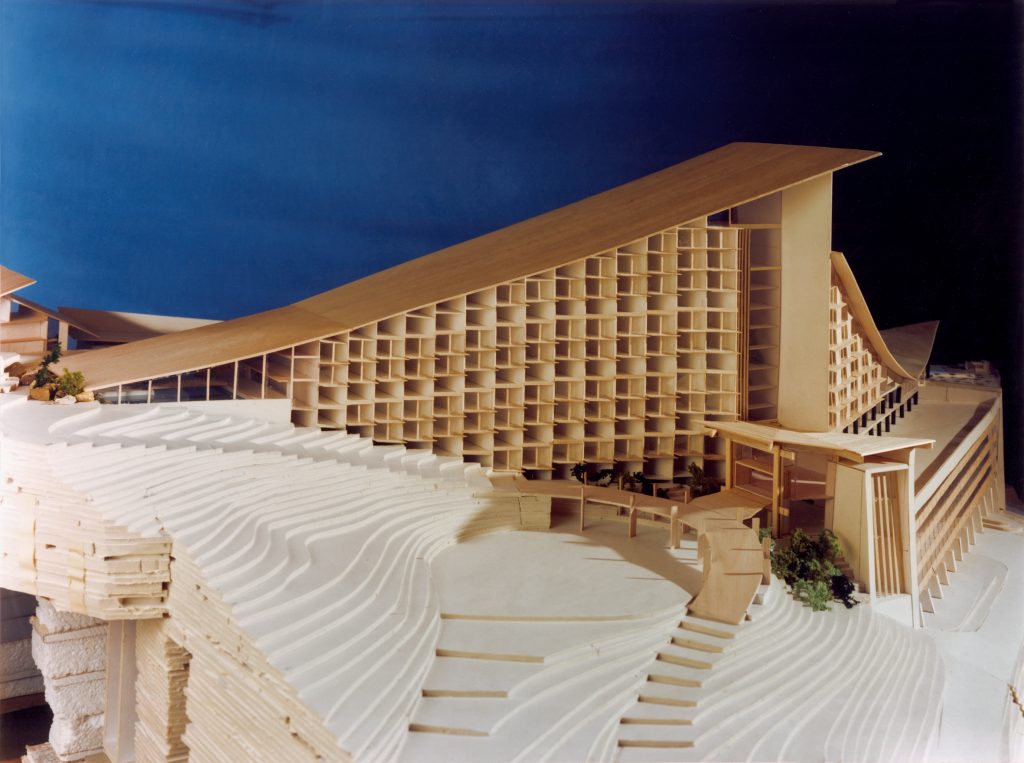
“Artists do not receive any basic training connecting their art to architectural disciplines. Furthermore, they are not always adequately prepared for using such techniques. There is now a disconnect between the conception of the object in a design drawing, its execution, and even its use.”
“Los artistas no reciben ningún entrenamiento básico que conecte su arte con las disciplinas arquitectónicas. Además, no siempre están adecuadamente preparados para utilizar tales técnicas. Existe ahora una desconexión entre la concepción del objeto en un dibujo de diseño, su ejecución, e incluso su uso.”
Charlotte Perriand
Her close emotional connection with the mountains, her paternal family coming from the French Alps, will make her develop from a young age a concern for the protection and maintenance of natural areas. Her greatest work, the Les Arcs hotel accommodation, which she worked in over two decades, helped her to strengthen her ideas within a framework of appreciation and respect for ecosystems.
Su estrecha vinculación emocional con las montañas, su familia paterna procedía de los Alpes franceses, hará que desarrolle también desde joven una preocupación por la protección y el mantenimiento de los espacios naturales. Su obra magna, los alojamientos hoteleros de Les Arcs, trabajo que desarrolló durante dos décadas, le servirán para poder desarrollar sus ideas desde un marco de puesta en valor y respeto de los ecosistemas.
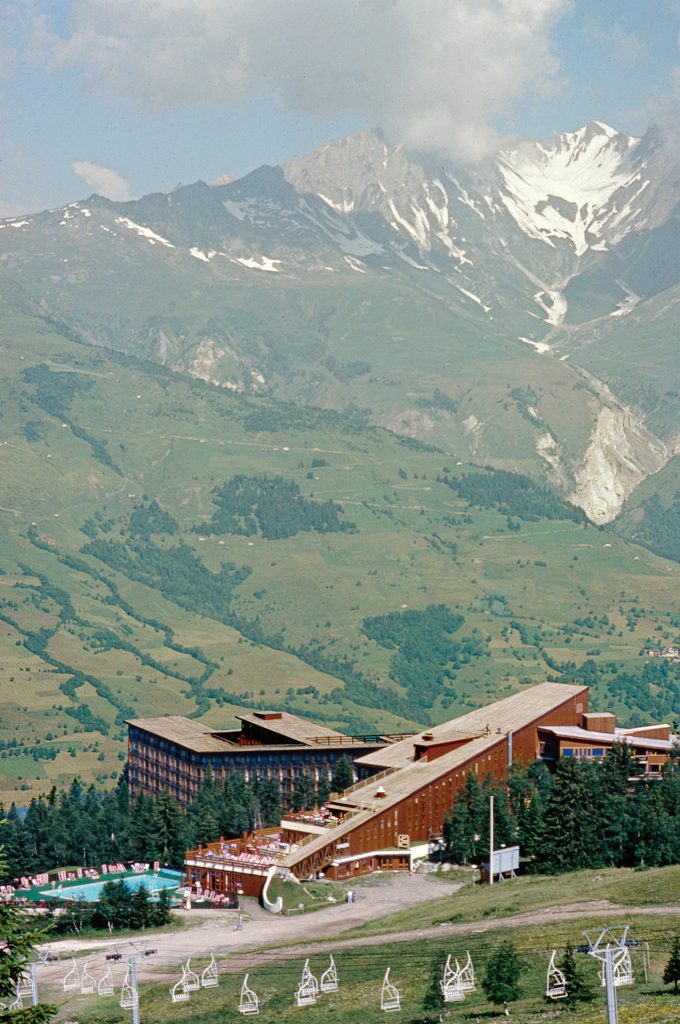
As an active citizen in 20th century Europe, these well-intentioned approaches to social justice or ecology will be confronted with the very contradictions and conflicts that modern life inexorably faced us. Her furniture designs will become cult objects within the reach of very few. Her work was mostly focused on the enjoyment of an elite rather than for a working class in difficulty. Her ecological sensibility, which respected the environment, was truncated by the speculative drift that Les Arcs took in its last phase, which forced her to abandon the project. Fleeing from demagoguery, these denials or failures should not be used to undermine Charlotte Perriand’s achievements, but, on the contrary, to value in the right measure the capital importance of her legacy in a complex era where she fought as a pioneer on many fronts. Always with an attitude of active resistance.
Como ciudadana activa en la Europa del siglo XX, estos planteamientos bien intencionados sobre justicia social o ecología se verán enfrentados a las propias contradicciones y conflictos que la vida moderna inexorablemente nos prepara. Sus diseños de mobiliario se convertirán en objetos de culto al alcance de muy pocos. Su trabajo acabará desarrollándose más para el disfrute de unas élites que para una clase obrera con dificultades. Su sensibilidad ecologizante respetuosa con el medio ambiente terminará truncada por la deriva especuladora que Les Arcs tomó en su última fase, lo que le condujo a abandonar el proyecto. Huyendo de demagogias, estas negaciones o fracasos no deben ser utilizados para menoscabar los logros de Charlotte Perriand, sino, al contrario, para valorar en su justa medida la importancia capital de su legado en una época compleja donde luchó como pionera en muchos frentes. Siempre con una actitud de resistencia activa.
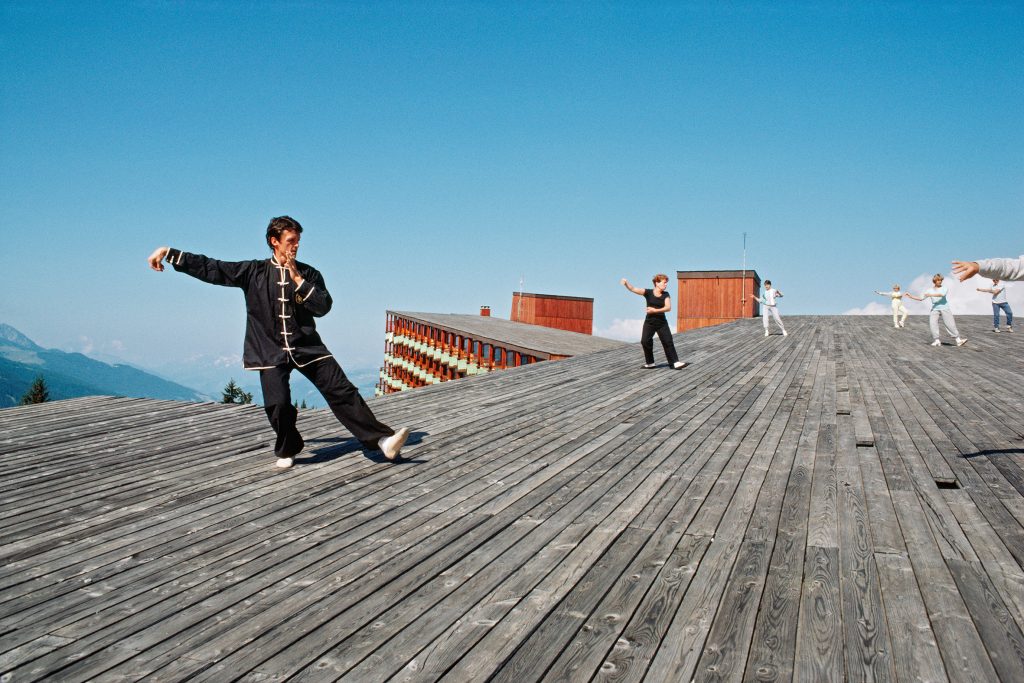
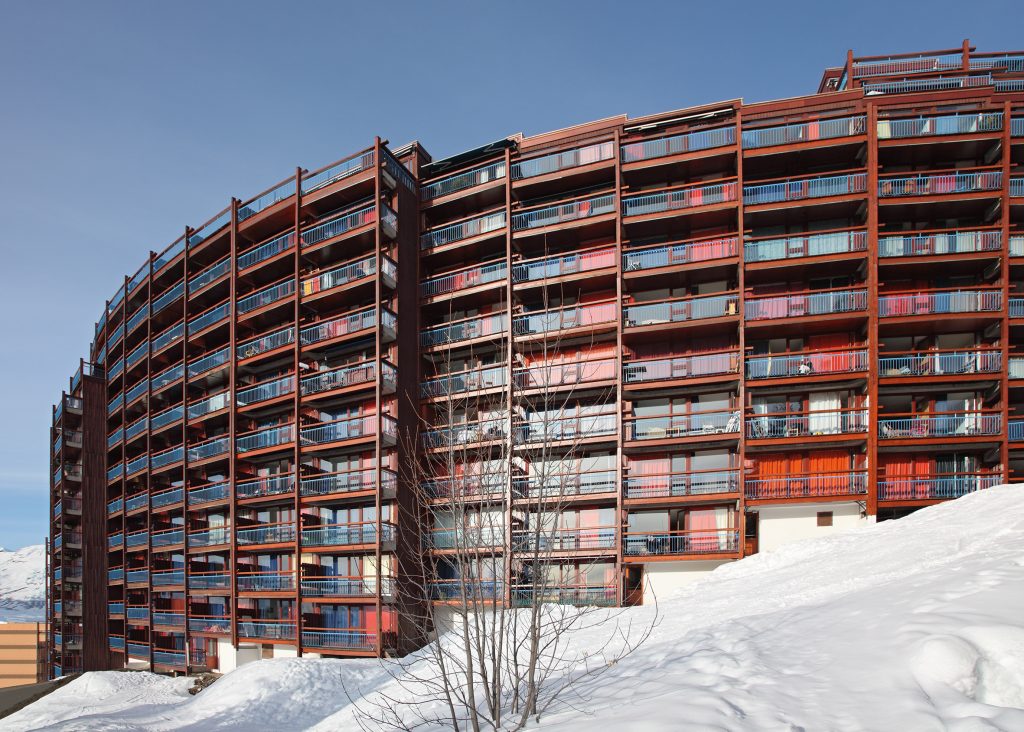
“Her mother, who was an experienced seamstress for the haute couture industry, had given her a taste for work, the key to women’s autonomy, and granted her her freedom the day she turned eighteen in 1921. Perriand seized this freedom with steely determination – a necessary prerequisite in a patriarcal society that did not give women any rights, wheter civil (until 1965, a woman had to obtain her husband’s signature before she could open a bank account) political (the right to vote was granted only in 1944), or educational (until 1924 girls did not take the same baccalaureate exam as boys and consequently were few in number at university).”
“Su madre, que era una costurera experimentada en la industria de la alta costura, le había dado el gusto por el trabajo, la clave de la autonomía de la mujer, y le concedió su libertad el día que cumplió dieciocho años en 1921. Perriand se apoderó de esta libertad con una determinación férrea, condición necesaria en una sociedad patriarcal que no concedía a la mujer ningún derecho, ya fuera civil (hasta 1965, la mujer debía obtener la firma de su marido antes de poder abrir una cuenta bancaria), político (el derecho de voto no se concedió hasta 1944), o educativo (hasta 1924 las chicas no hacían el mismo examen de bachillerato que los chicos y, por consiguiente, eran pocas en la universidad)”.
Jacques Barsac
The present volume, “Charlotte Perriand. Complete Works Volume 4 1968-1999” closes the complete works of the French architect that Scheidegger&Spiess began in 2014 with the publication of the first volume. Keeping truly the character that has been a constant in the four volumes of the series, we are undoubtedly faced with a major work. The care taken in the edition, the very high quality of the documentation provided and the rigour shown in each element make the book reach a level of excellence that we find very difficult to surpass. Covering the final phase of Charlotte Perriand’s production, her last thirty years of life, this fourth volume will obviously focus on the design and construction process of the multiple projects that make up the Alpine holiday town of Les Arcs. The story is built on two fundamental pillars: a scrupulous rigour in research and documentation, and a closeness and depth in each detail that is characteristic of a highly specialised work. The photographs and plans provided are of fabulous quality, something that unfortunately is not very common in all monographs on architects. In this case we are doubly grateful. Had it not been done with this rigour and elegance, it might have been complex and confusing to follow the hand of Charlotte Perriand in the multiple scales and realizations that make up the Les Arcs complex. To go through the text with a calm reading, enjoying every detail or anecdote, and to experience the spaces produced by the architect through the images is an essential enjoyment. Few monographs have the capacity to evoke the architectural work, stripped of direct experience, with the force that this book displays.
El presente volumen, “Charlotte Perriand. Complete Works Volume 4 1968-1999” pone cierre a la obra completa de la arquitecta francesa que Scheidegger&Spiess inició en 2014 con la publicación del primer volumen. Siendo fiel al carácter que ha sido una constante en los cuatro volúmenes de la serie, nos encontramos sin lugar a duda frente a una obra capital. El cuidado en la edición, la altísima calidad de documentación aportada y el rigor mostrado en cada elemento consiguen que el libro alcance un nivel de excelencia que se nos antoja muy complicado de superar. Abarcando la fase final de la producción de Charlotte Perriand, sus últimos treinta años de vida, este cuarto volumen se centrará, como es obvio, en el proceso de diseño y construcción de los múltiples proyectos que conforman la ciudad de vacaciones alpina de Les Arcs. El relato se construye sobre dos pilares fundamentales: un rigor escrupuloso en la investigación y documentación, y una cercanía y profundidad en cada detalle propios de una obra muy especializada. Las fotografías y planos que se aportan son de una calidad fabulosa, algo que por desgracia no suele ser muy habitual en todas las monografías sobre arquitectos. En este caso se agradece doblemente. De no haberse realizado con este rigor y elegancia, podría haber resultado complejo y confuso seguir la mano de Charlotte Perriand en las múltiples escalas y realizaciones que componen el complejo de les Arcs. Recorrer el texto con una lectura sosegada, disfrutando cada detalle o anécdota, y vivir los espacios producidos por la arquitecta a través de las imágenes es un disfrute imprescindible. Pocas monografías poseen la capacidad de evocar la obra arquitectónica, despojada de la experiencia directa, con la fuerza que este libro despliega ante nosotros.
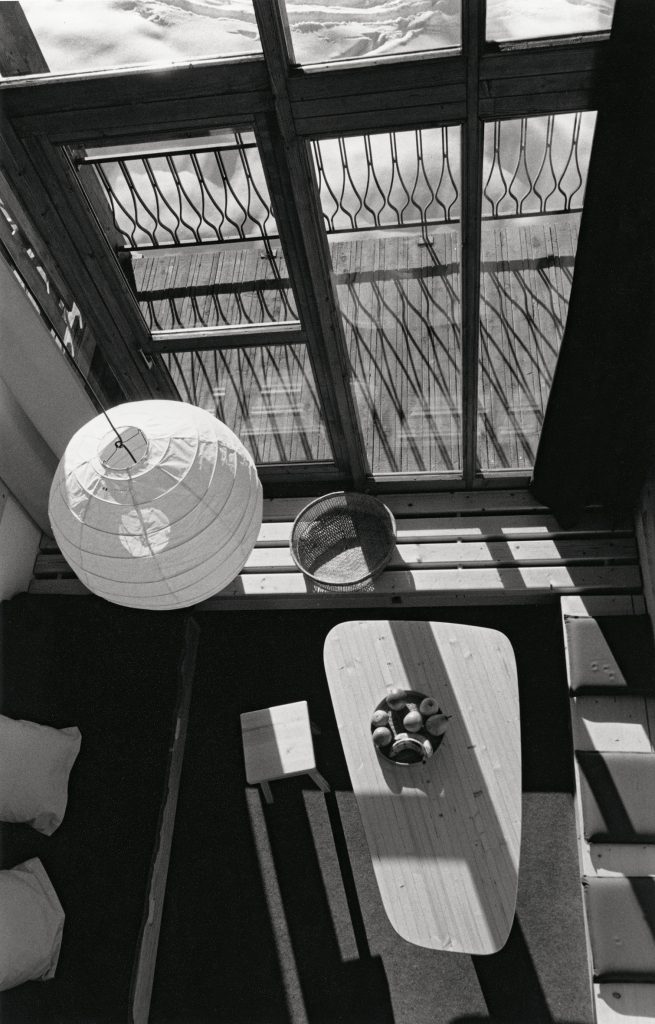
While keeping our enthusiasm for the book written by Jacques Barsac intact, we have an obligation to point out a flaw that is very common in this type of almost encyclopedic work on the trajectory of a person with magnificent impact. The text presents an unquestionable critical rigour, there is no doubt, but the emotional closeness with what it tries to expose sometimes provokes in the reader, at least in us it has, a deification sensation that could seem excessive. It seems to us a detail perhaps without too much relevance that surely many readers will not share with us, but we believe that it is necessary to make an extraordinary effort of distancing in order to build an architectural critique at the level of the works to be dissected. In this case, Charlotte Perriand’s undoubtedly deserves it.
Manteniendo intacto nuestro entusiasmo por el libro escrito por Jacques Barsac, tenemos empero la obligación de señalar un fallo que es muy frecuente en este tipo de obras casi enciclopédicas sobre la trayectoria de una persona de magnífico impacto. El texto presenta un incuestionable rigor crítico, no hay duda, pero la cercanía emocional con aquello que pretende exponer provoca en ocasiones en el lector, al menos en nosotros lo ha hecho, una sensación de deificación que podría parecer excesiva. Nos parece un detalle quizá sin demasiada relevancia que seguramente muchos lectores no compartirán con nosotros, pero creemos que es necesario hacer un esfuerzo extraordinario de distanciamiento para construir una crítica arquitectónica a la altura de las obras que se pretenden diseccionar. En este caso, la de Charlotte Perriand sin duda lo merece.
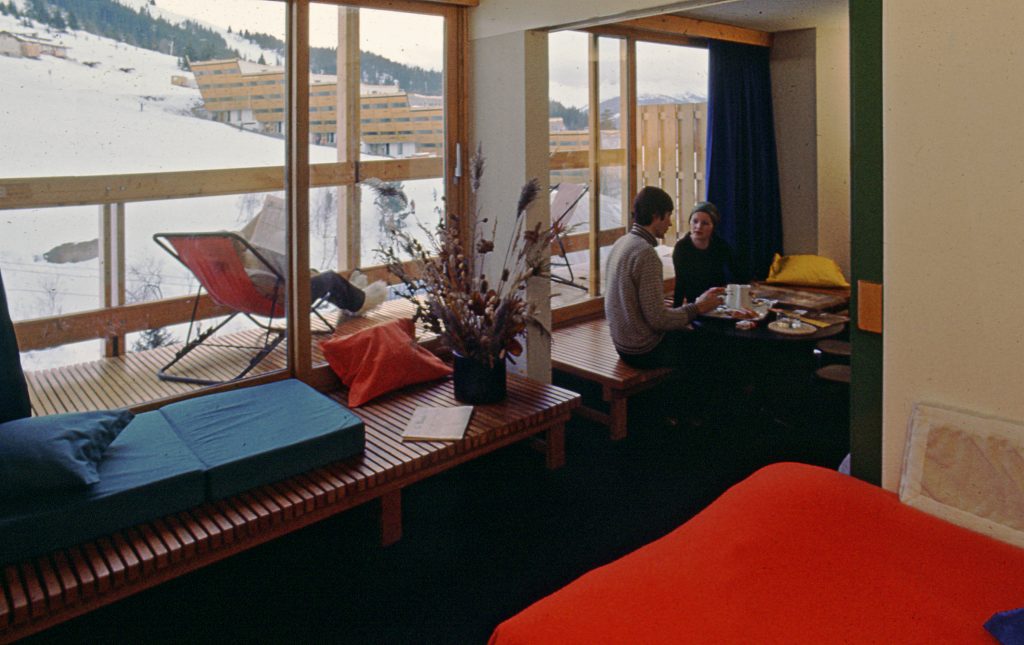
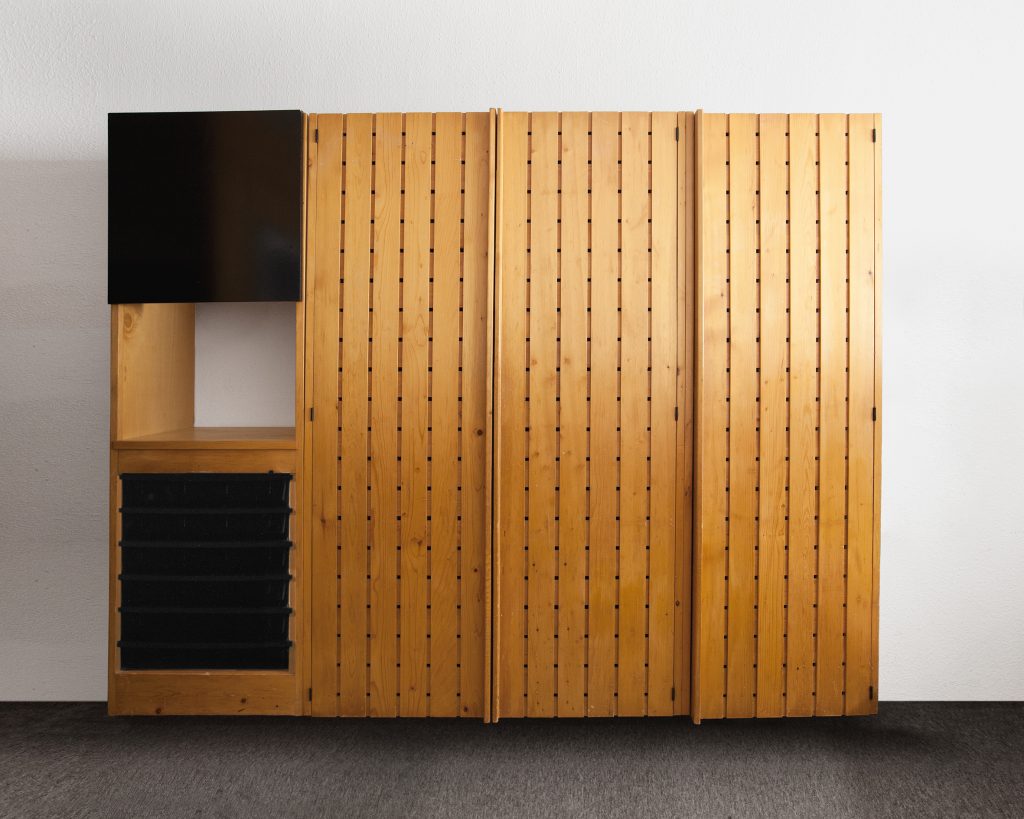
To sum up, the fourth volume of “Charlotte Perriand. Complete Works” finishes the one which, now perhaps we are a little over-enthusiastic, is surely the most profound and careful work on the production of an architect that we have enjoyed to date. The level of detail and the exhibition brilliance achieved will be difficult to surpass. The high price of this book, as well as the lack of recognition that Charlotte Perriand’s work unfortunately still suffers, will perhaps prevent it from having the impact it certainly deserves. But let us not be deluded. As Louis Kahn rightly pointed out, when we acquire a book we pay the price of what the physical object costs, but the immaterial value of its contribution to humanity is priceless. In this case, we are convinced that both statements are deeply true.
En definitiva, el cuarto volumen de “Charlotte Perriand. Complete Works” pone cierre a la que, ahora quizá pequemos de exceso de entusiasmo nosotros, seguramente sea la obra completa sobre la producción de un arquitecto más profunda y cuidada de la que hemos disfrutado hasta la fecha. El nivel de detalle y la brillantez expositiva alcanzada serán difícilmente superables. El elevado precio de este libro, así como la falta de reconocimiento que aún sufre desgraciadamente la obra de Charlotte Perriand quizá impedirán que su impacto sea el que desde luego merece. Pero no nos engañemos. Como bien señalaba Louis Kahn, cuando adquirimos un libro pagamos el precio de lo que el objeto físico cuesta, pero el valor inmaterial de esta aportación a la humanidad es impagable. En este caso, estamos convencidos de que ambas afirmaciones se cumplen.
